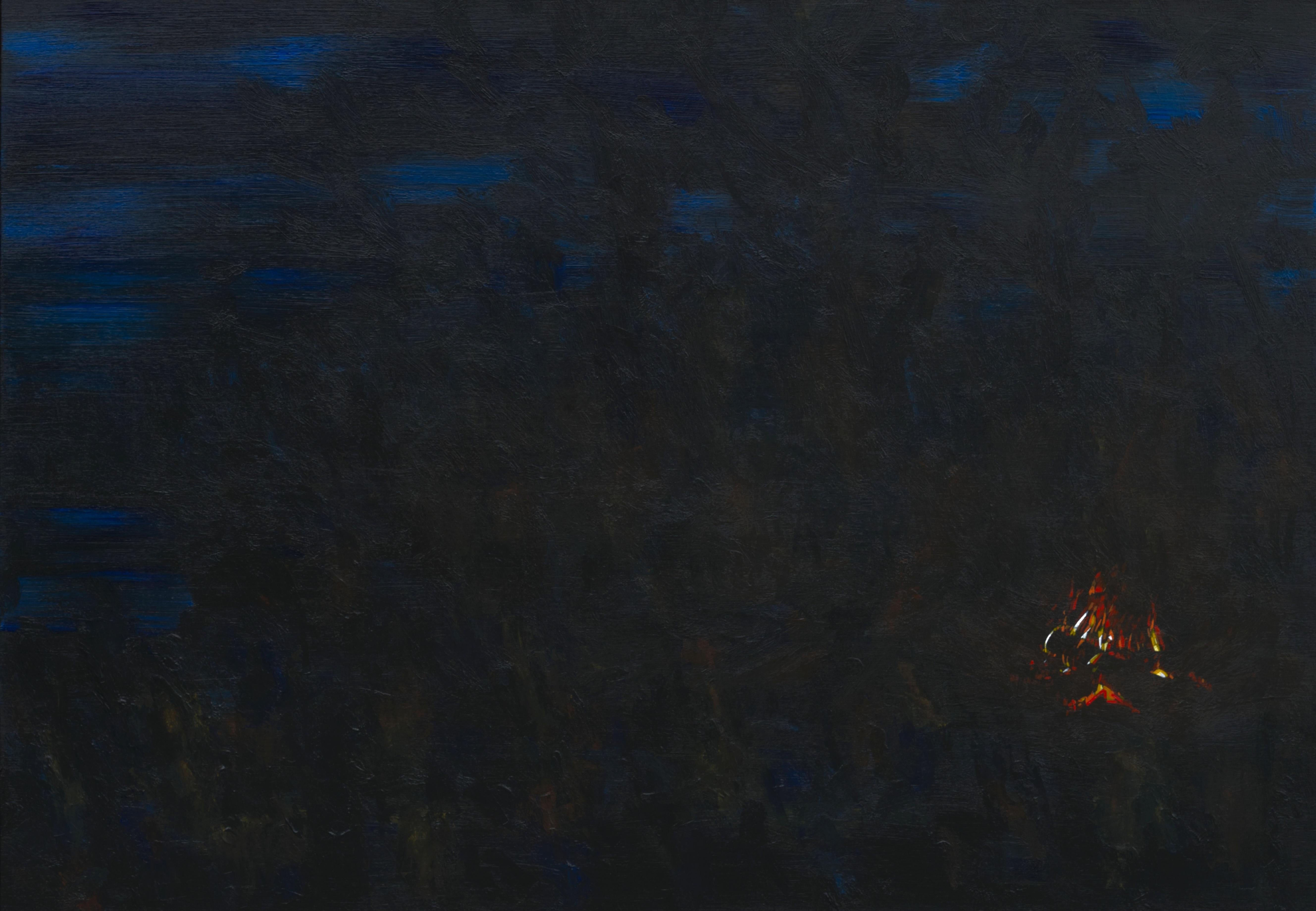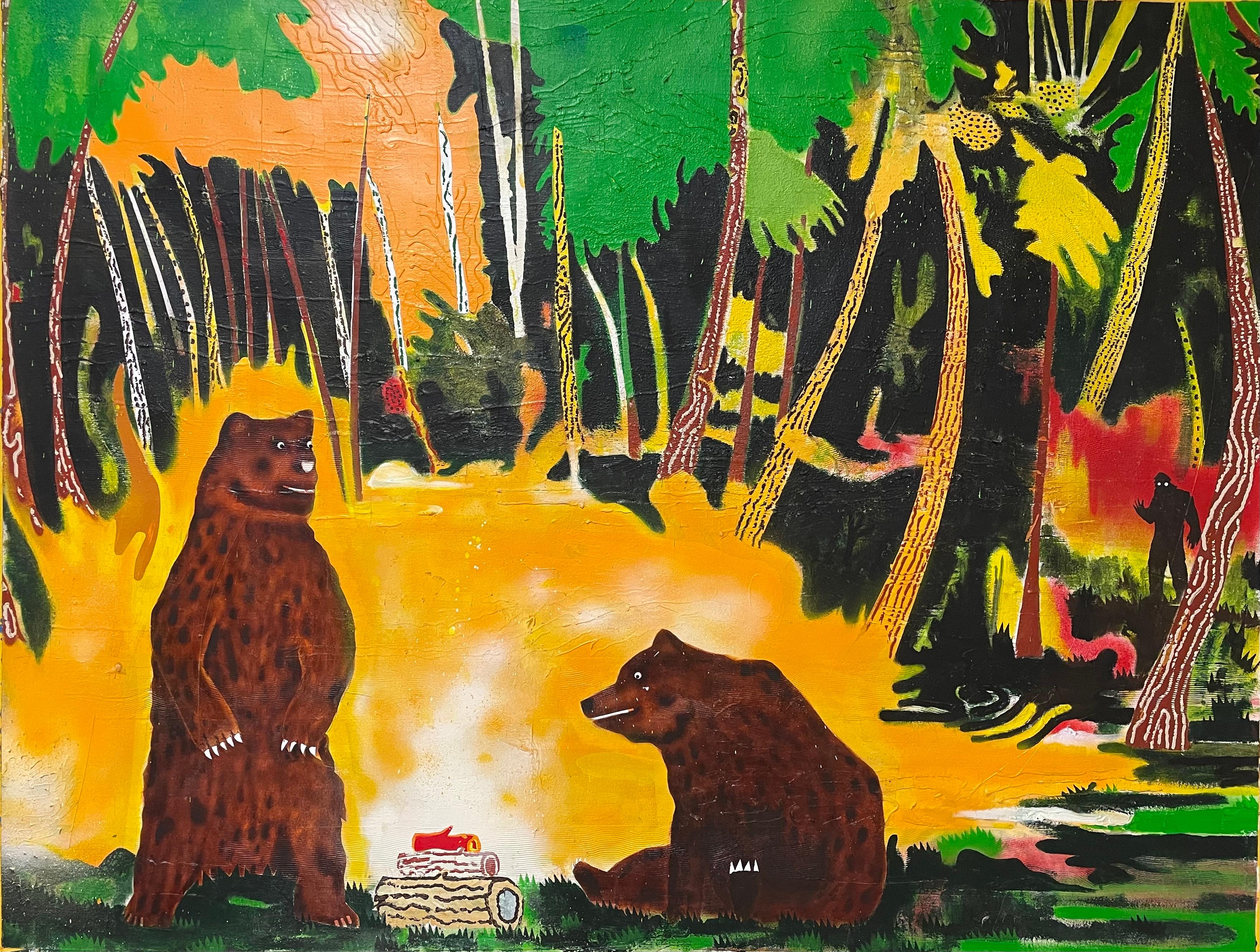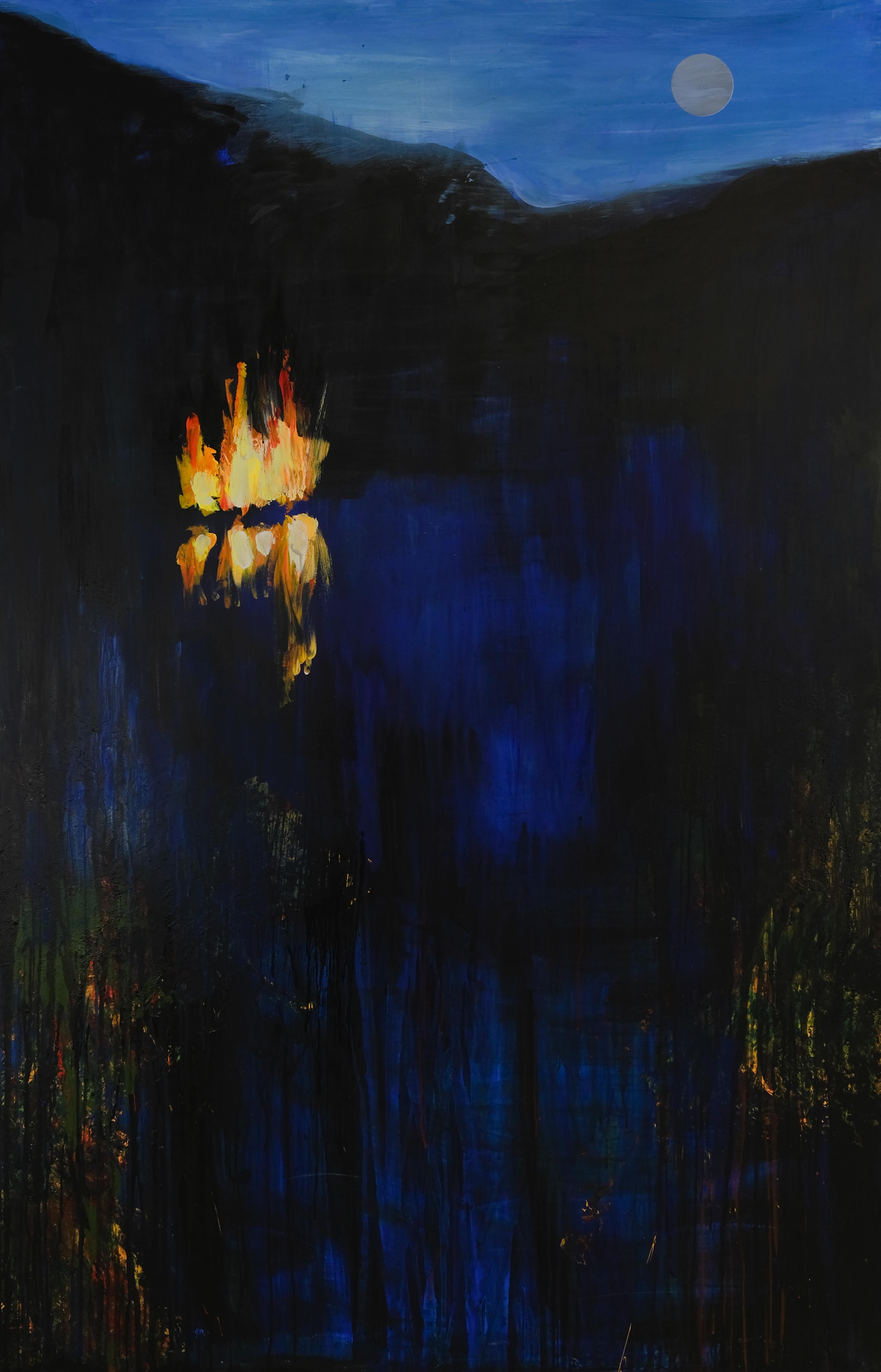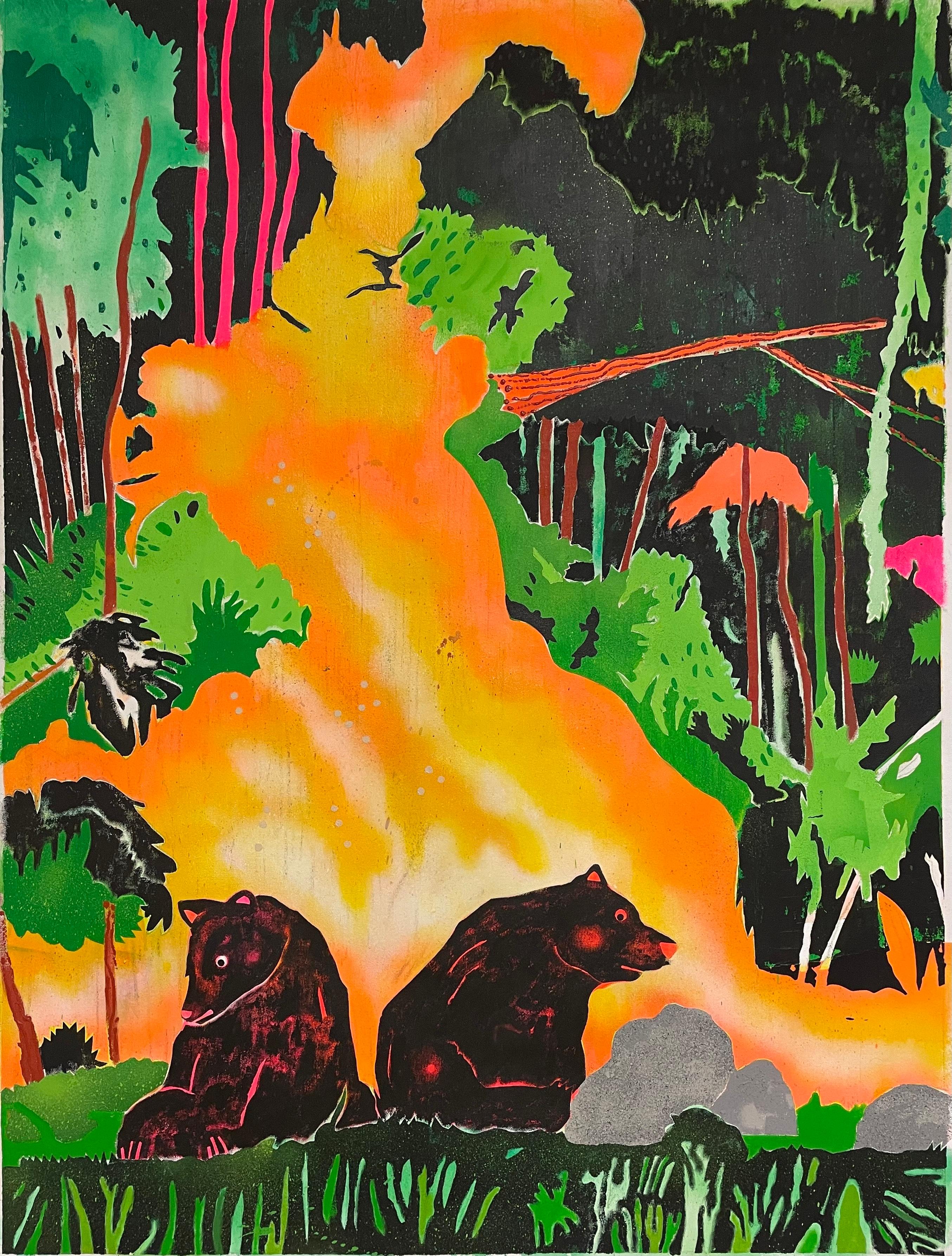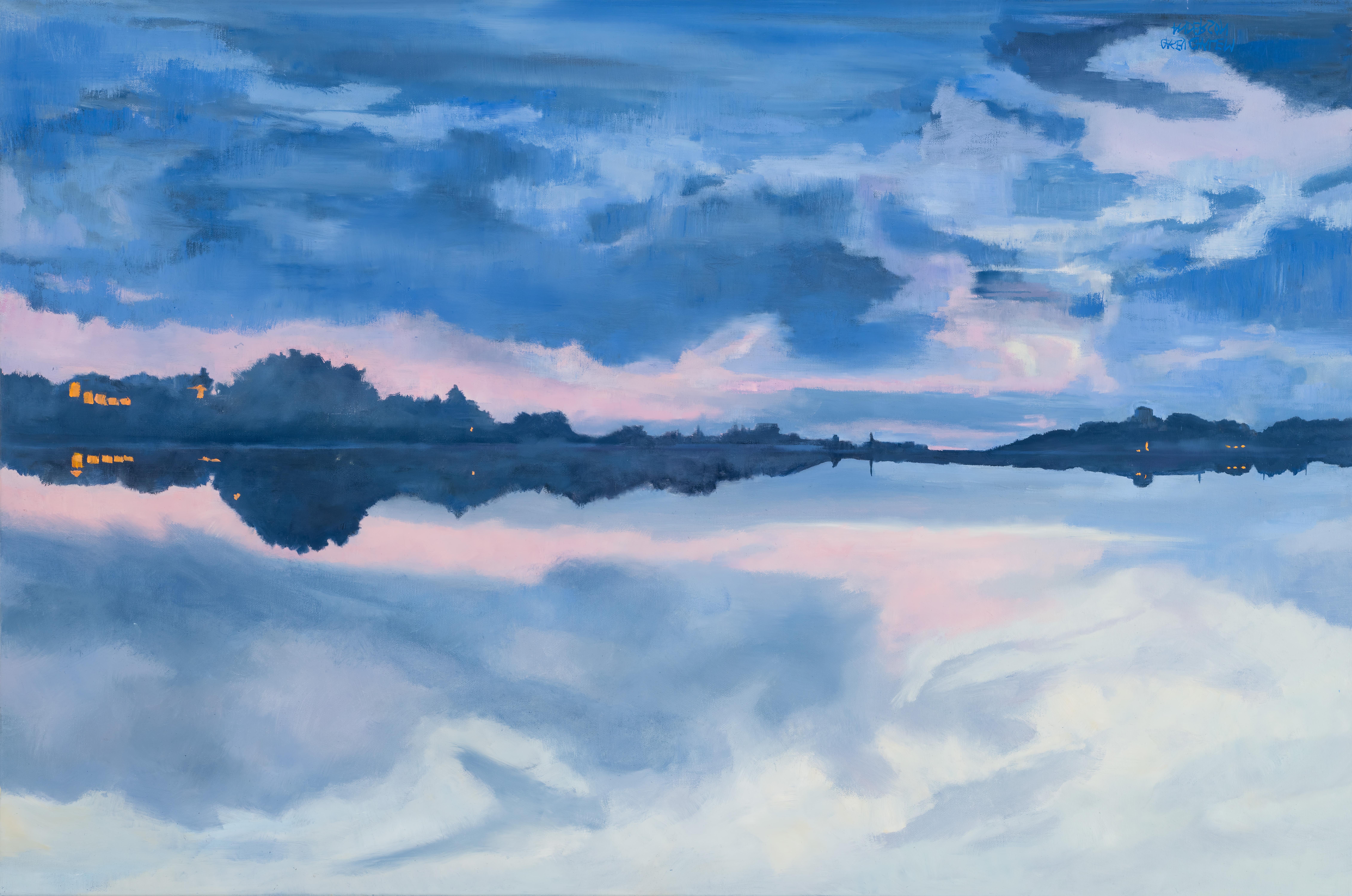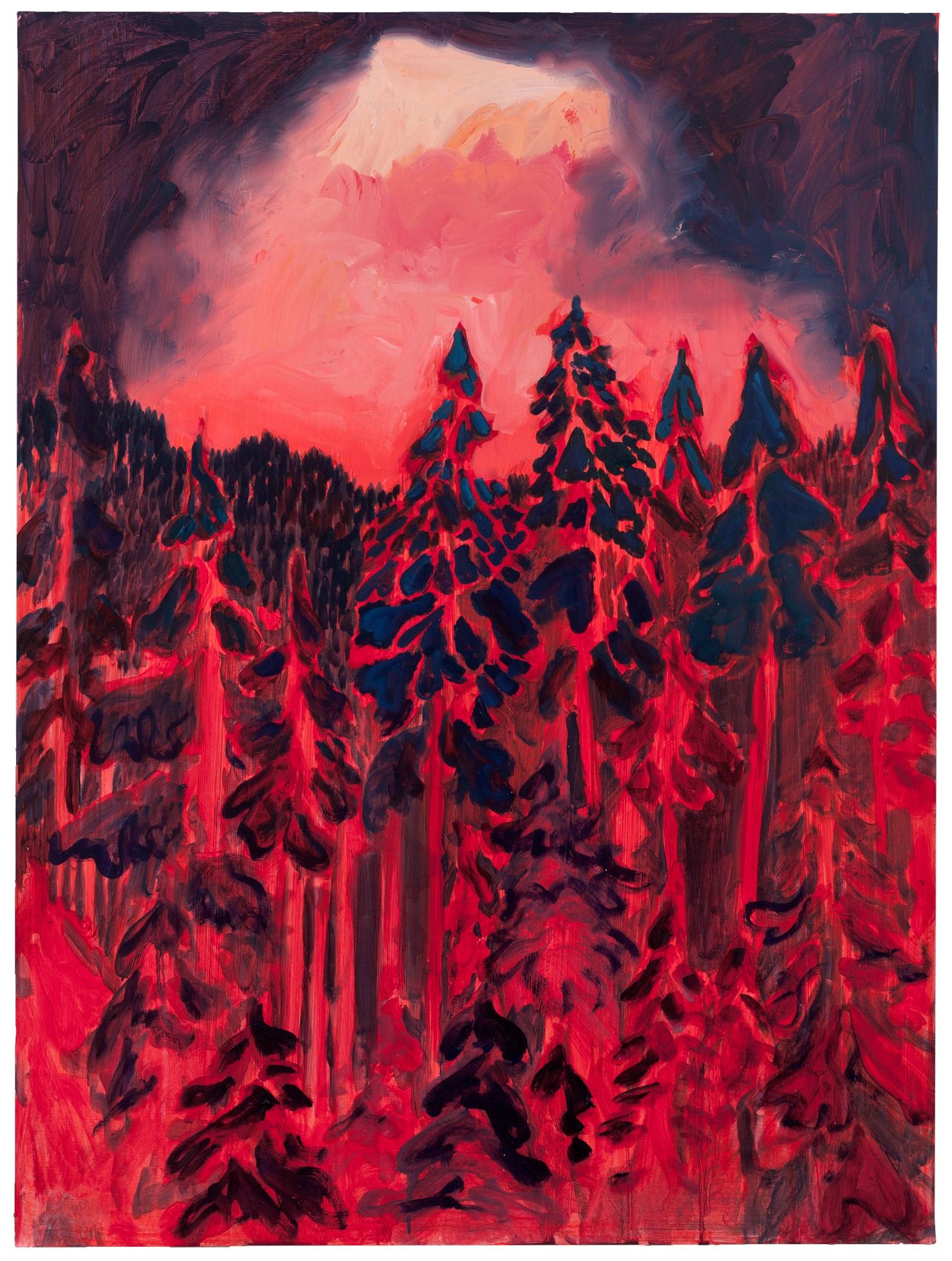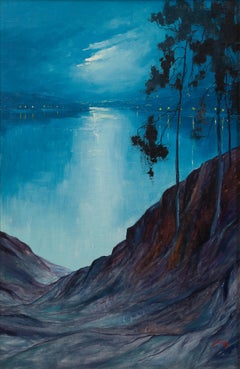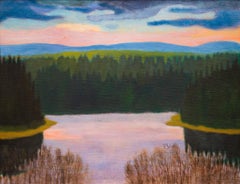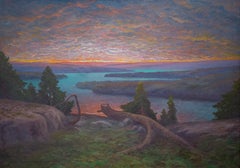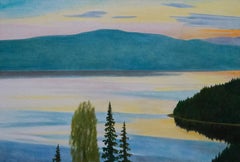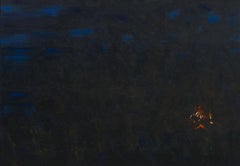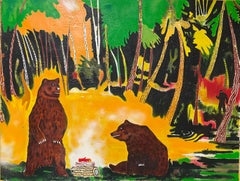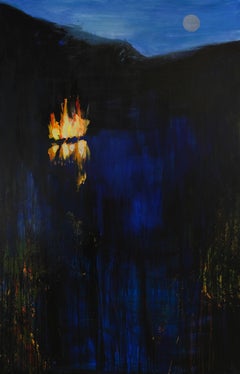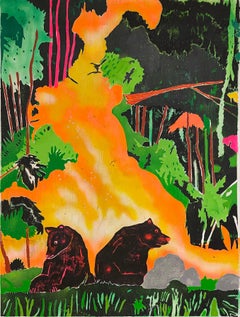Items Similar to "Walpurgis Night Reflections" by Jonny Oppenheimer
Want more images or videos?
Request additional images or videos from the seller
1 of 10
Jonny Oppenheimer"Walpurgis Night Reflections" by Jonny Oppenheimermid 20th century
mid 20th century
$1,880.97
$2,507.9625% Off
£1,389.92
£1,853.2325% Off
€1,575
€2,10025% Off
CA$2,605.68
CA$3,474.2425% Off
A$2,848.11
A$3,797.4725% Off
CHF 1,500.03
CHF 2,000.0425% Off
MX$35,020.20
MX$46,693.5925% Off
NOK 18,746.22
NOK 24,994.9625% Off
SEK 17,636.49
SEK 23,515.3225% Off
DKK 11,993.51
DKK 15,991.3525% Off
About the Item
We are proud to present "Walpurgis Night Reflections," an enchanting painting by the German-Swedish artist Jonny Oppenheimer (1923-2005).
This piece is a captivating representation of a serene night scene, showcasing Oppenheimer's mastery of color and mood.
Born in Berlin, Germany, Jonny Oppenheimer was the son of merchant Sally Wilhelm Oppenheimer and Charlotte Salome Lewenberg. He initially studied painting under Hübner Lauenburg, developing a naivist style in his early works. Oppenheimer's life took a significant turn in 1939 when he fled to Sweden. There, he initially worked in forestry before returning to his artistic pursuits through self-study.
"Walpurgis Night Reflections" is a testament to Oppenheimer's ability to evoke emotion through his art. The painting features a tranquil lakeside scene at night, with a dense, dark forest to the right. Dominated by shades of blue and black, the composition is both moody and mesmerizing. The dark woods are mirrored in the lake, creating a sense of depth and mystery.
A significant element in this painting is the large bonfire at the lake's edge on the right side, symbolizing the traditional Walpurgis Night (Majbrasa). The fire's glow against the night sky and the smoke trail reaching upwards add a dynamic contrast to the otherwise cool color palette. This detail not only adds warmth to the scene but also signifies hope and renewal, themes often found in Oppenheimer's works.
After his move to Sweden, Oppenheimer exhibited his art in various cities, including Halmstad, Falun, Jönköping, Linköping, as well as internationally in New York, Tel Aviv, Copenhagen, and Berlin. His oeuvre includes still lifes, portraits, and landscapes, predominantly from southern Halland, rendered in oil.
information:
signed Oppenheimer
unframed 50 x 73 cm
framed 65 x 87 cm
Provenance:
A Swedish private collection
- Creator:Jonny Oppenheimer (1923 - 2005, Swedish, German)
- Creation Year:mid 20th century
- Dimensions:Height: 19.69 in (50 cm)Width: 28.75 in (73 cm)
- Medium:
- Period:
- Condition:Very good condition, frame with minor flaws.
- Gallery Location:Stockholm, SE
- Reference Number:1stDibs: LU1445213458982
About the Seller
5.0
Platinum Seller
Premium sellers with a 4.7+ rating and 24-hour response times
Established in 2020
1stDibs seller since 2020
198 sales on 1stDibs
Typical response time: <1 hour
Associations
International Confederation of Art and Antique Dealers' Associations
- ShippingRetrieving quote...Shipping from: Stockholm, Sweden
- Return Policy
Authenticity Guarantee
In the unlikely event there’s an issue with an item’s authenticity, contact us within 1 year for a full refund. DetailsMoney-Back Guarantee
If your item is not as described, is damaged in transit, or does not arrive, contact us within 7 days for a full refund. Details24-Hour Cancellation
You have a 24-hour grace period in which to reconsider your purchase, with no questions asked.Vetted Professional Sellers
Our world-class sellers must adhere to strict standards for service and quality, maintaining the integrity of our listings.Price-Match Guarantee
If you find that a seller listed the same item for a lower price elsewhere, we’ll match it.Trusted Global Delivery
Our best-in-class carrier network provides specialized shipping options worldwide, including custom delivery.More From This Seller
View AllMidnight Reflections From the Artist Lidingö Studio
Located in Stockholm, SE
This captivating painting by the Swedish-Danish artist Axel Lind offers a serene and introspective view from the artist's studio on Lidingö, Stockholm. The c...
Category
Mid-20th Century Landscape Paintings
Materials
Canvas, Oil
$2,833 Sale Price
34% Off
Northern Serenity by Swedish Artist Per Julius
Located in Stockholm, SE
Introducing "Northern Serenity" by renowned Swedish artist Per Julius (born 1951). This captivating painting captures a serene landscape from the northern r...
Category
Late 20th Century Modern Landscape Paintings
Materials
Canvas, Oil
$1,813 Sale Price
20% Off
A Scandinavian Landscape View by Swedish Artist Oscar Lycke, Large Size Painting
Located in Stockholm, SE
Oscar Lycke was a Swedish artist from Sundsvall. He is best known for his impressive colourful landscape paintings in a national romantic and realism styl...
Category
1920s Romantic Landscape Paintings
Materials
Canvas, Oil
$3,314 Sale Price
25% Off
Scandinavian Lake View by Swedish Artist Per Julius (b.1951), Oil on Canvas
Located in Stockholm, SE
A beautiful original oil painting by Swedish artist Per Julius (b.1951).
Julius is best known for his beautiful depictions of the Scandinavian nature and t...
Category
20th Century Naturalistic Landscape Paintings
Materials
Canvas, Oil
Expressive Plein Air Study from Engelsberg
Located in Stockholm, SE
This intimate plein air study by Olof Arborelius captures the quiet beauty of a sunlit forest edge reflected in still water. The confident, spontaneous brushwork and delicate handlin...
Category
1880s Impressionist Landscape Paintings
Materials
Oil, Board
Birger Hjelm – Våreldar ("Spring Fires"), c. 1935
Located in Stockholm, SE
Birger Hjelm – Våreldar ("Spring Fires"), c. 1935-1938
Oil on board
unframed 80 x 84.5 cm (31 ½ x 33 ¼ in)
framed 82 x 87 cm (32 ¼ x 34 ¼ in)
Signed “Birger Hjelm” lower right; titl...
Category
1930s Romantic Landscape Paintings
Materials
Oil, Board
You May Also Like
Campfire 18 September 22:24 - Forest Landscape Night Painting, Nature
By Robert Motelski
Located in Salzburg, AT
Robert Motelski's paintings are exceptional visions of nature, visions of space which surrounds us. They tell about being, fate and passing. They depend on the season of year, the ti...
Category
2010s Contemporary Landscape Paintings
Materials
Canvas, Acrylic
Nocturne 3
Located in Bozeman, MT
Formalism collides with a punk rock, folk art sensibility in his pop culture mash-ups that explore the liminal space between the natural and built environment. The animal kingdom acts as our proxy. His paintings are noticeably devoid of the human figure, replaced by a colorful bestiary cavorting in landscapes that echo speculative fiction...
Category
2010s Contemporary Abstract Paintings
Materials
Canvas, Mixed Media, Spray Paint, Acrylic
Fire On The Water - Large Format, Contemporary Landscape Painting, Lake View
By Agnieszka Zawisza
Located in Salzburg, AT
Agnieszka Zawisza (born 1970) is a painter, visual artist and art teacher. She studied at the Warsaw Art Academy, Department of Painting (1994-2000), obtaining a Master's degree with...
Category
2010s Contemporary Figurative Paintings
Materials
Canvas, Acrylic
Nocturne 7
Located in Bozeman, MT
Formalism collides with a punk rock, folk art sensibility in his pop culture mash-ups that explore the liminal space between the natural and built environment. The animal kingdom acts as our proxy. His paintings are noticeably devoid of the human figure, replaced by a colorful bestiary cavorting in landscapes that echo speculative fiction...
Category
2010s Contemporary Abstract Paintings
Materials
Canvas, Mixed Media, Spray Paint, Acrylic
Night Flash
Located in Fairfield, CT
For me, art begins with the sensation of being uplifted by the sheer beauty of nature. The colors grab my attention and move me to translate this feeling I get when I see a luscious ...
Category
2010s Landscape Paintings
Materials
Canvas, Oil
Dixie Fire
By Danielle Winger
Located in Bozeman, MT
"My work is about Place. There has always existed within me an urgency to define myself through place that stems from an upbringing full of uprooting and re homing. In the absence o...
Category
2010s Contemporary Landscape Paintings
Materials
Oil, Wood Panel
More Ways To Browse
Vintage Dark Wood Mirror
Contemporary Oil Painting Wave
Dunes Oil
Hawthorne Vintage
Ilya Repin
Kevin Nealon
Landscape With Ruins
Oil 1903
Painting Oil Moors
Pink Cherry Blossom
Pink Sky Paintings
Susan York
19th Sunset Landscape
English Pastoral
Large Seascape Painting
Norfolk Broads
Oil Painting Surf
Rare Antique Oil Painting
